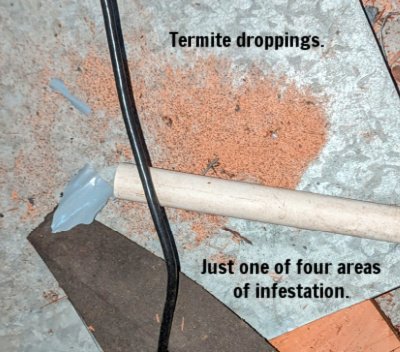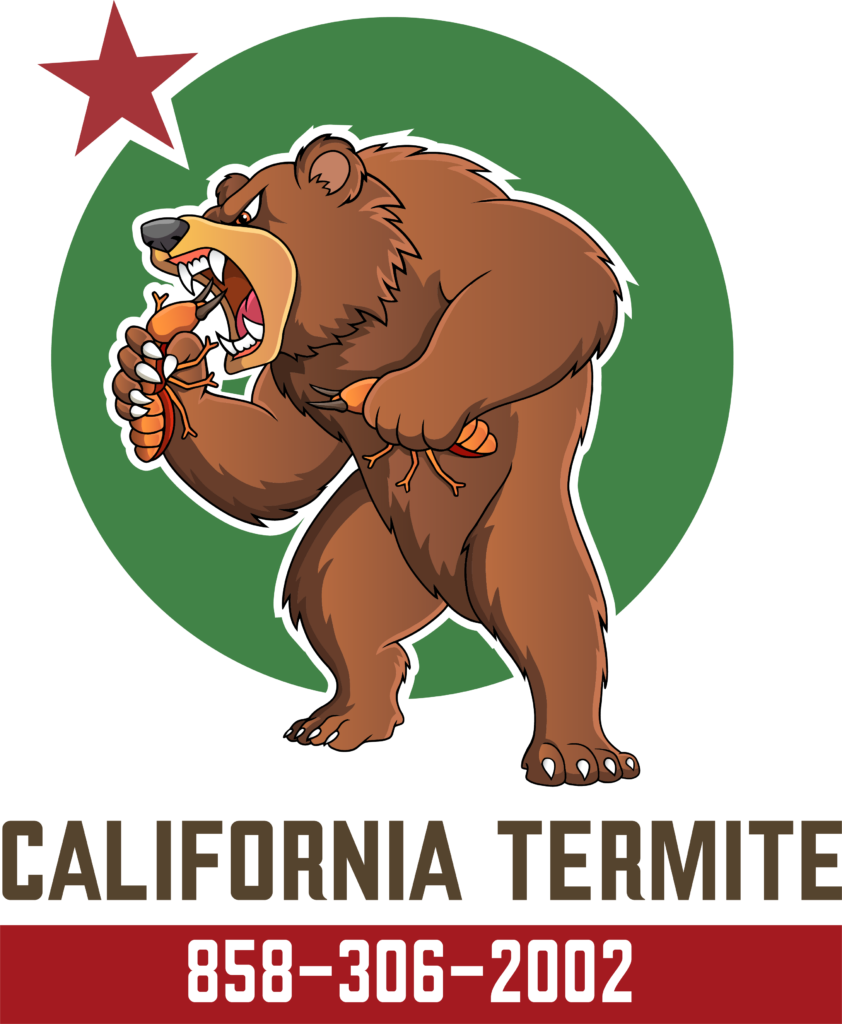Why It's Important for Your Termite Company to Clean Up Old Termite Evidence After Treatment
 First things first: termite droppings (also called frass) are made of wood, and they don’t decompose—at least not anytime soon. Some people say they darken over time, but really, how would anyone know the difference just by looking?
First things first: termite droppings (also called frass) are made of wood, and they don’t decompose—at least not anytime soon. Some people say they darken over time, but really, how would anyone know the difference just by looking?
I was in an attic recently where the homeowner had the house fumigated in December of 2020. This visit took place in May 2025, yet there were four separate piles of heavy drywood termite droppings scattered throughout the attic.
Let’s break that down.
Drywood termites swarm between August and November. Since the fumigation happened in December 2020, any post-treatment infestation would have had to come from a swarm in the fall of 2021—or later. And not just one lucky swarm. We’d be talking about four successful attacks in four different areas of the attic.
That’s unlikely.
Roughly 97% of swarming termites die shortly after leaving the colony. So that 3% would have to be the Fantastic Eight. And their offspring? They’d need to be the Michael Jordans of termites—outperforming a dozen regular termites just to leave that much evidence behind.
Could some have arrived in 2021, and others in 2022? There simply hasn’t been enough time for that level of infestation and droppings to accumulate. The far more logical explanation? Those droppings were there before the fumigation.
So why didn’t the termite company deal with it?
If they had inspected the attic properly, they would have marked the active areas with chalk. That’s standard practice. But there were no markings, which tells me the attic wasn’t inspected at all—or, in the very unlikely event, returned after the fume to apply a borate treatment, which washed away the chalk marks. Even so, the technician who borated the attic should have masked or removed the droppings. That’s part of doing the job right.
But here’s the kicker: most termite companies offer at least a one-year warranty, which should include a follow-up inspection. If a follow-up was performed, how did the inspector miss four piles of droppings in the attic? Either they didn’t go up there, or they saw it and chose to ignore it.
In all likelihood, no one ever came back. The fumigation was done, the house was cleared, and the company disappeared. That’s what often happens.
Fast forward a few years. Eventually, a new infestation might show up—maybe in a rafter tail, where the homeowner finds fresh droppings on top of their trash can. Naturally, they call a few companies for help. The inspectors check out the visible damage, then ask to inspect the attic. That’s when the real surprise hits: piles of droppings in multiple areas.
Suddenly, the homeowner is told:
“Sorry, you’re going to need to tent the entire house.”
Not:
“You’ve got one small issue here. We can treat that locally—no problem.”
And what if the original fumigation failed? It doesn’t happen often, but it does happen. If the company had come back and masked or removed the original droppings, then any new droppings would be a red flag. A good annual inspector would catch it, confirm that the treatment failed, and—because the home is under warranty—recommend a second fumigation free of charge. (You might even get hotel accommodations comped for the inconvenience.)
But if the droppings were never cleaned up? Then no one can say whether they’re old or new. That ambiguity costs the homeowner, either in unnecessary treatments or missed warranty coverage.
This is why masking or cleaning up termite evidence is so important.
It shows the treatment was done thoroughly.
It protects the homeowner.
And it provides clarity for future inspections.
At California Termite, we take this seriously. We only sell treatments that are effective, and we always mask or remove all termite evidence after the job is done. That way, you’re not left guessing—and neither are we.
